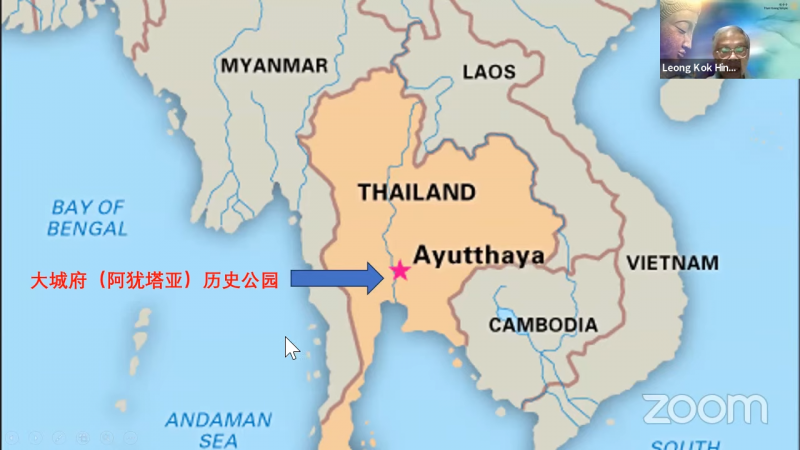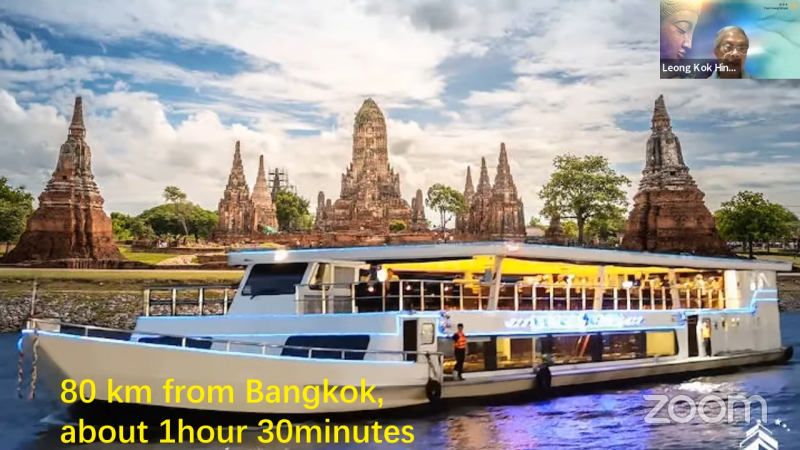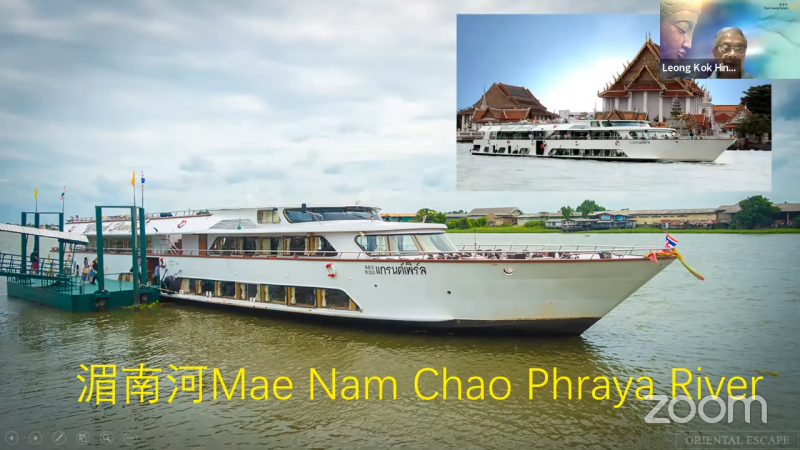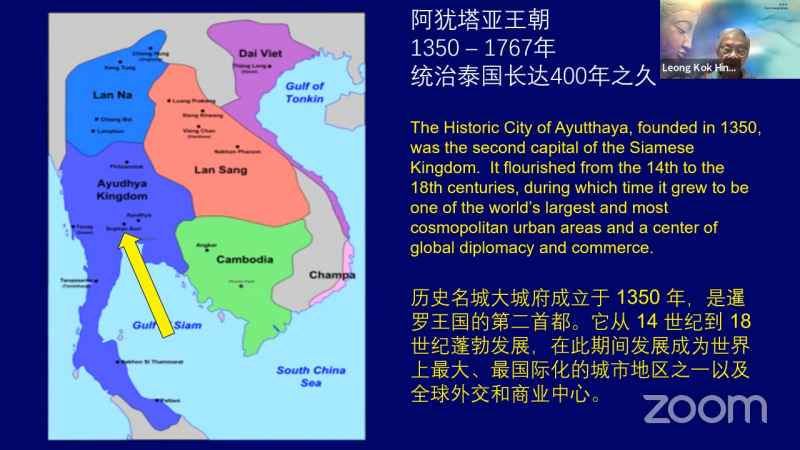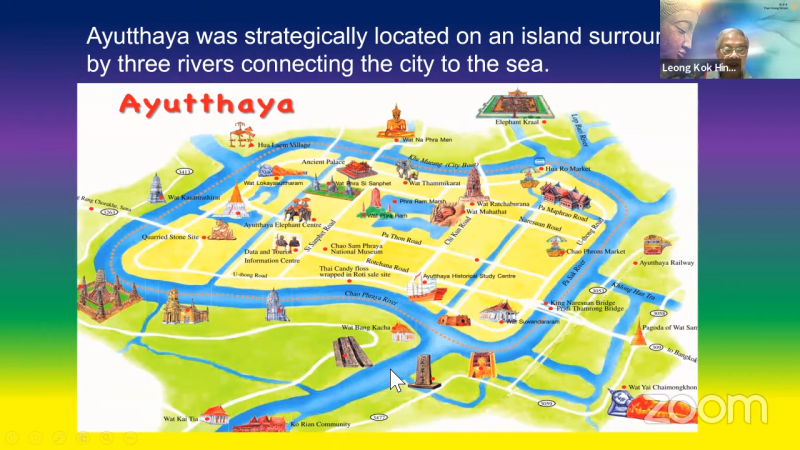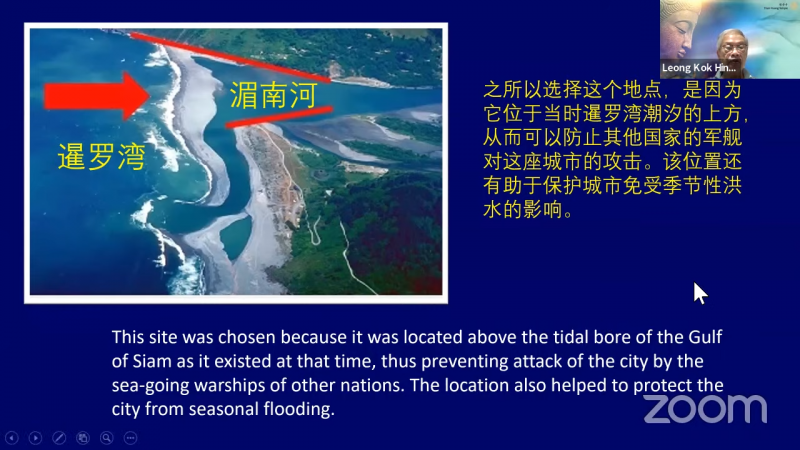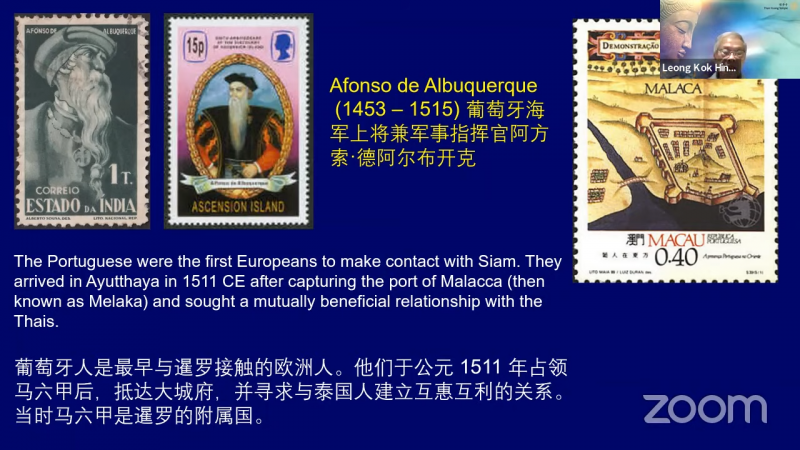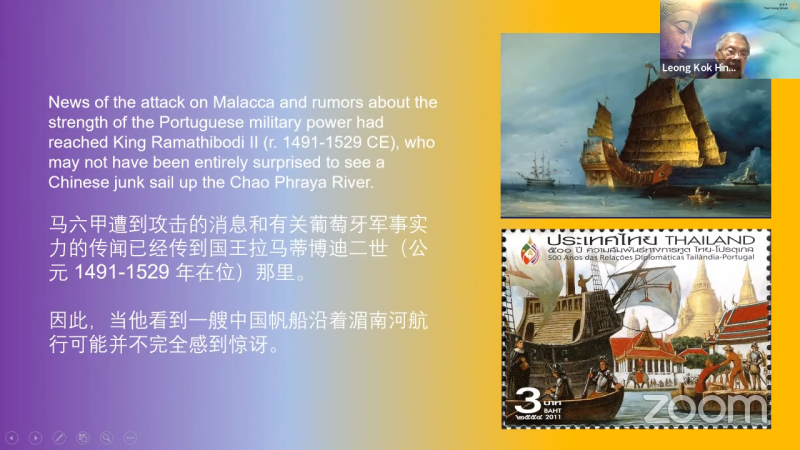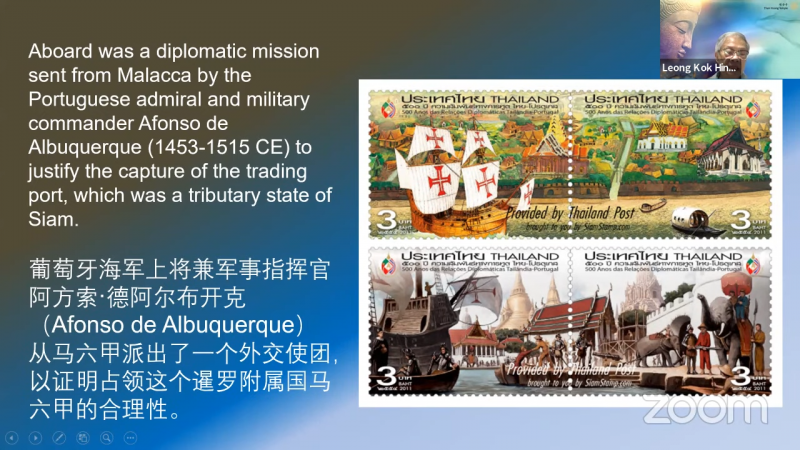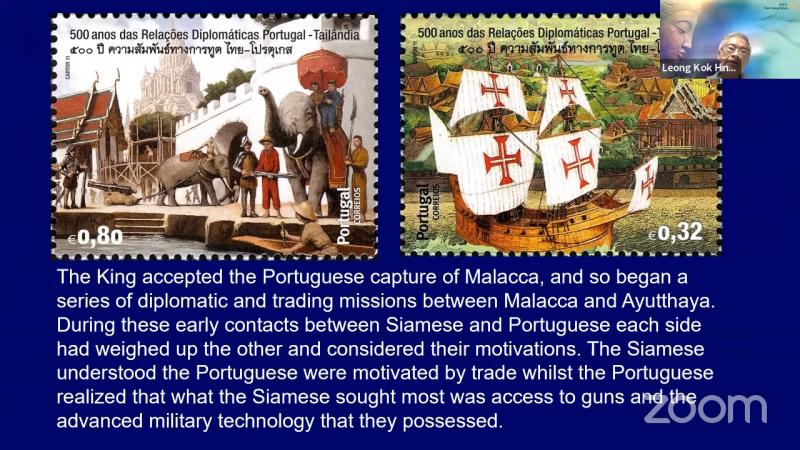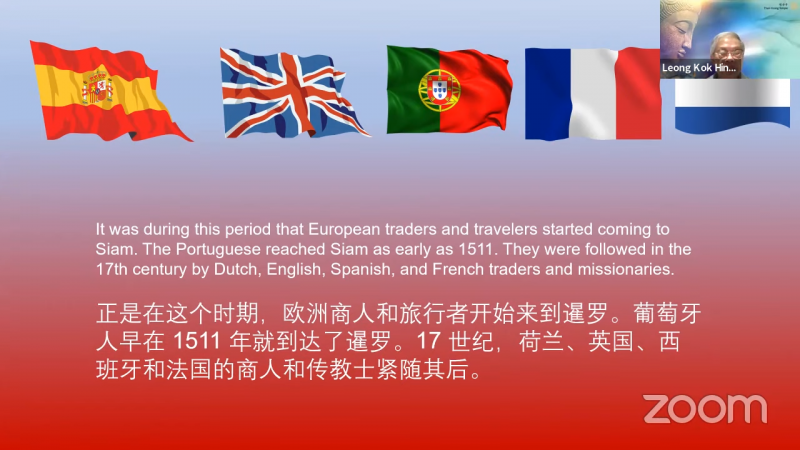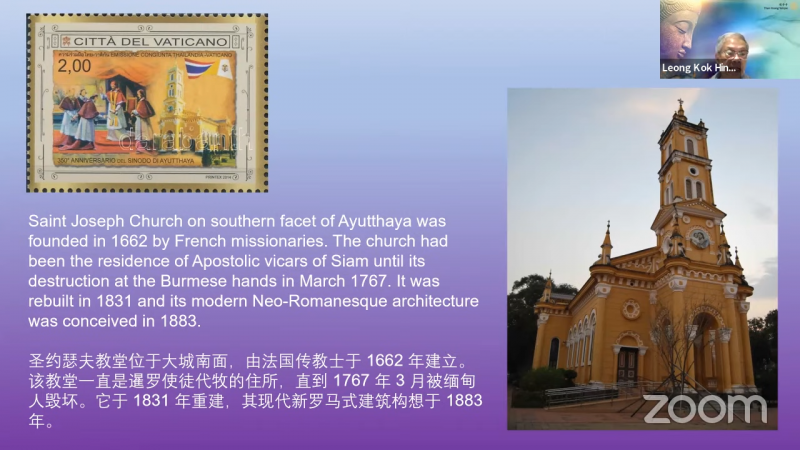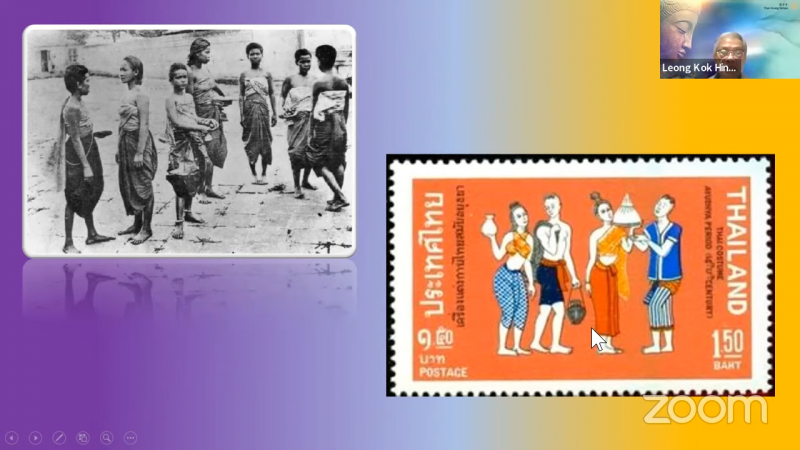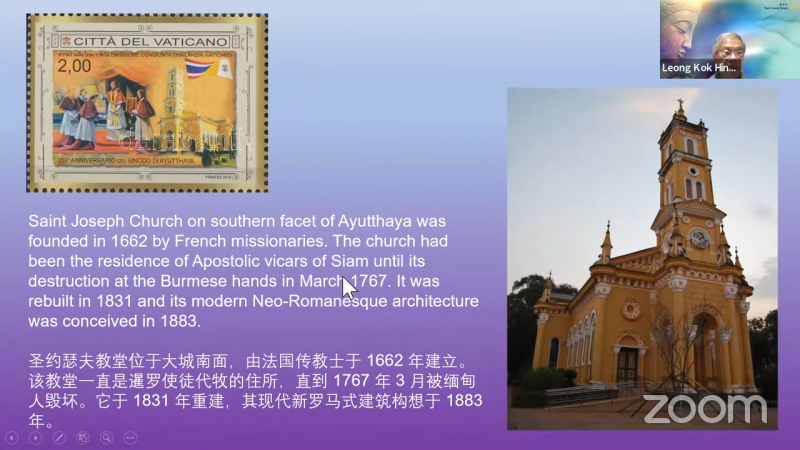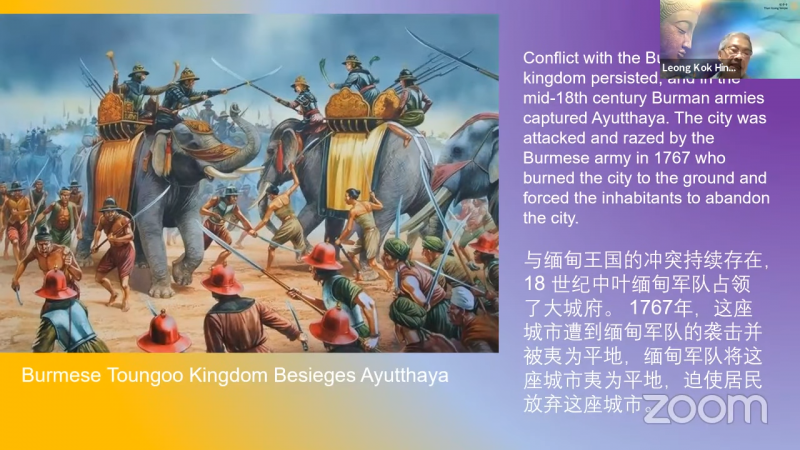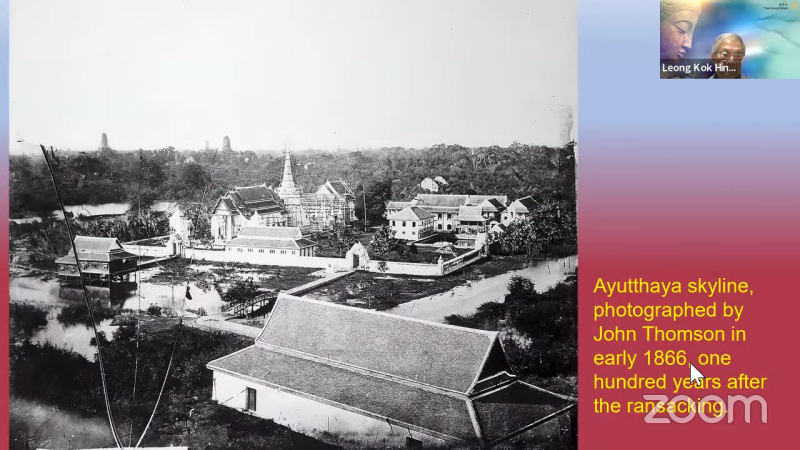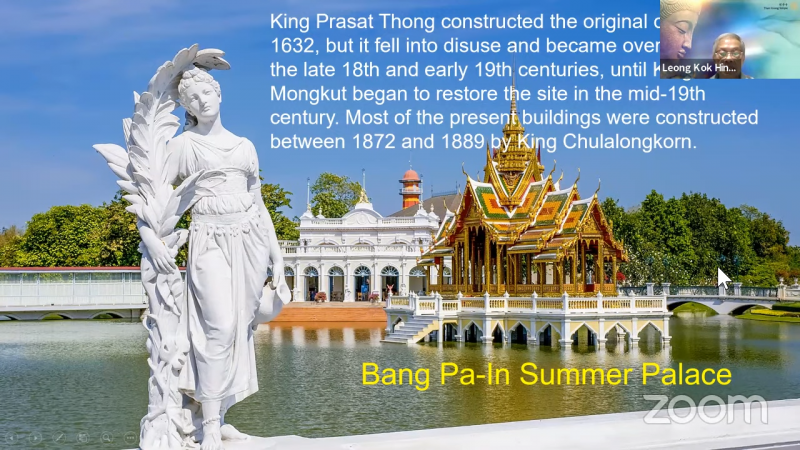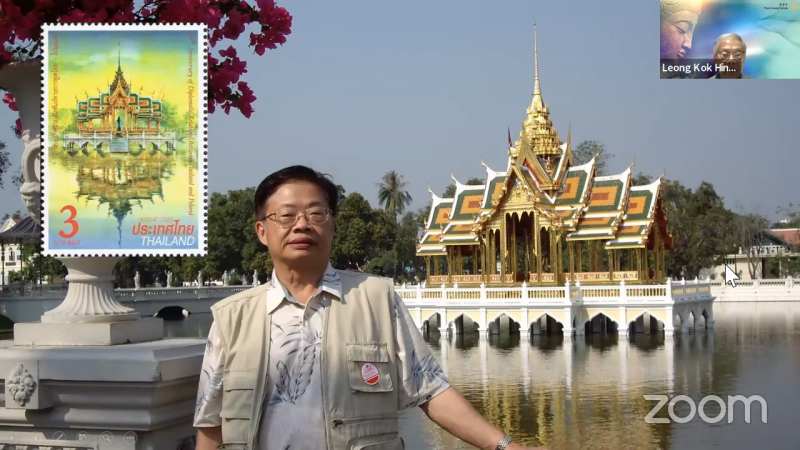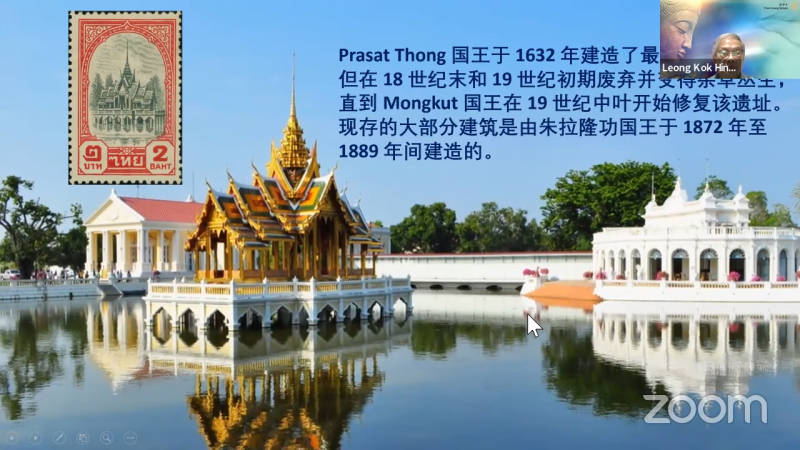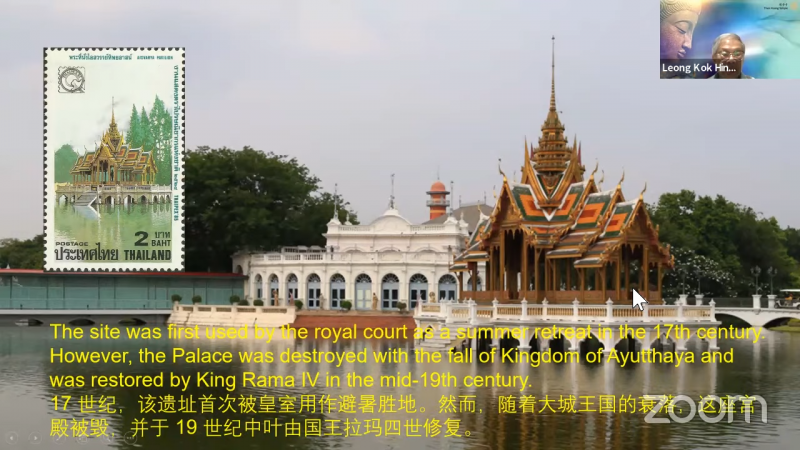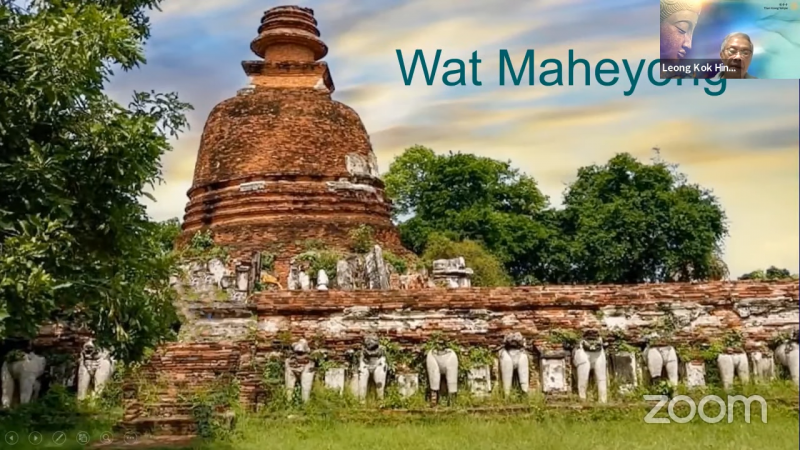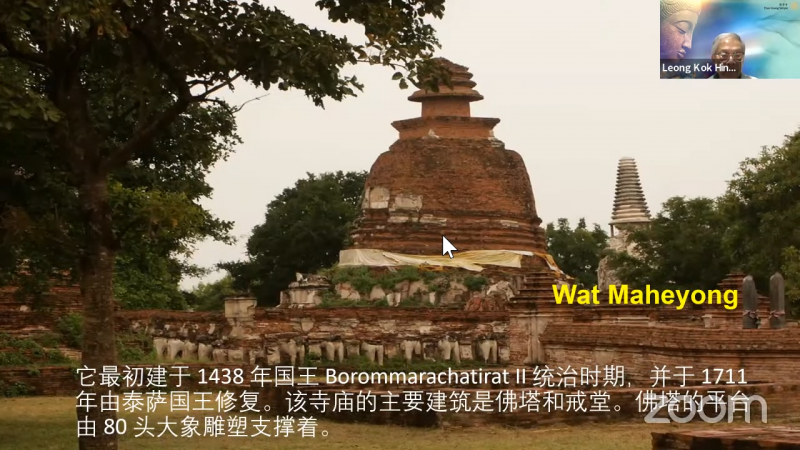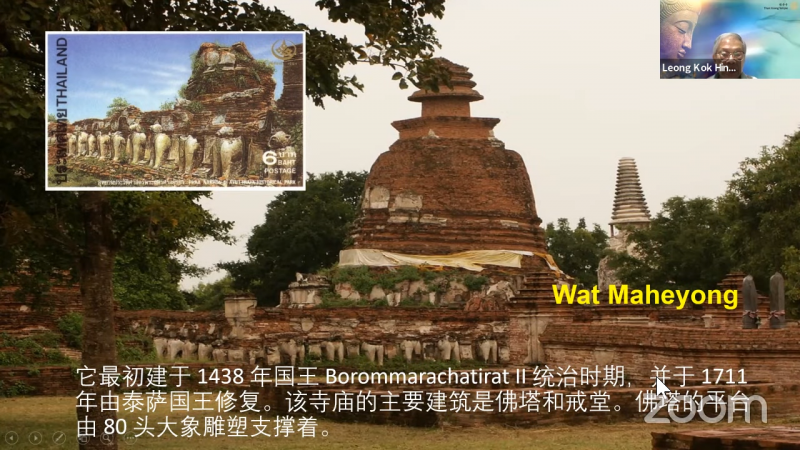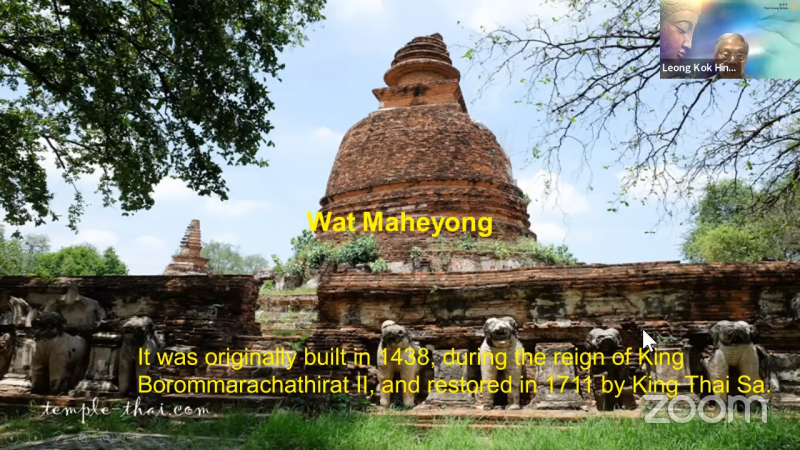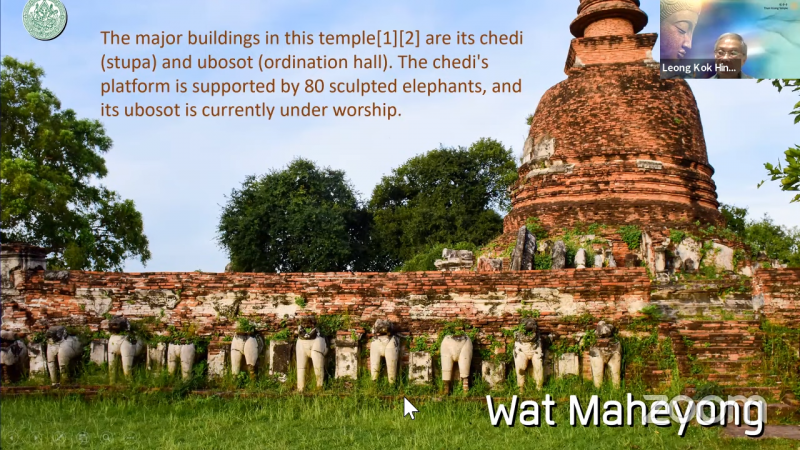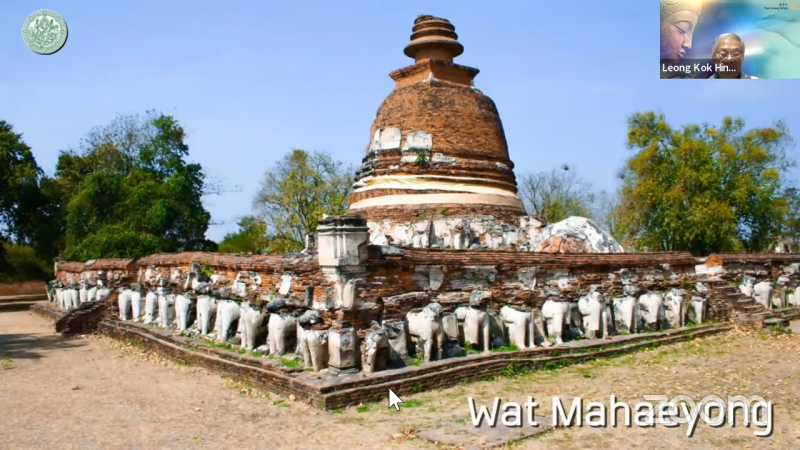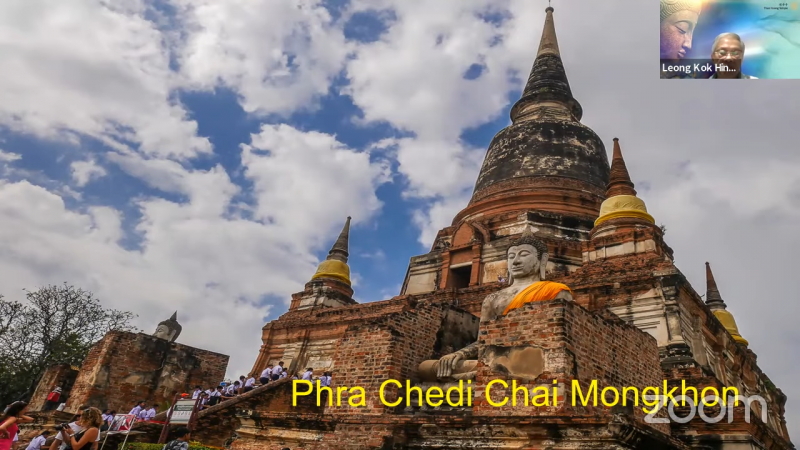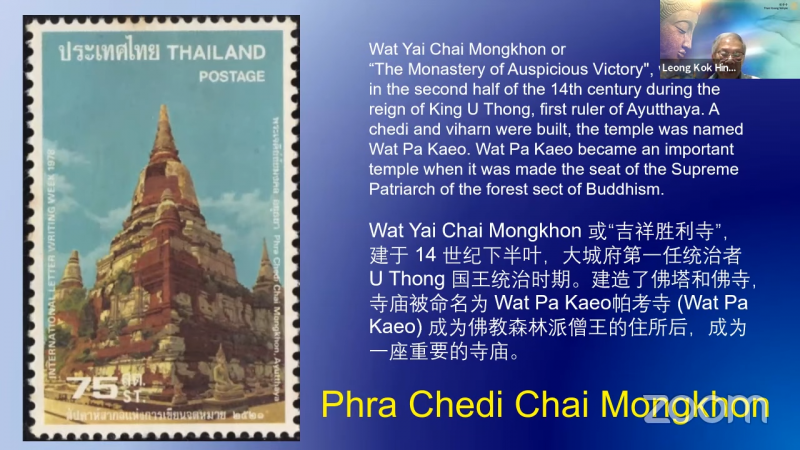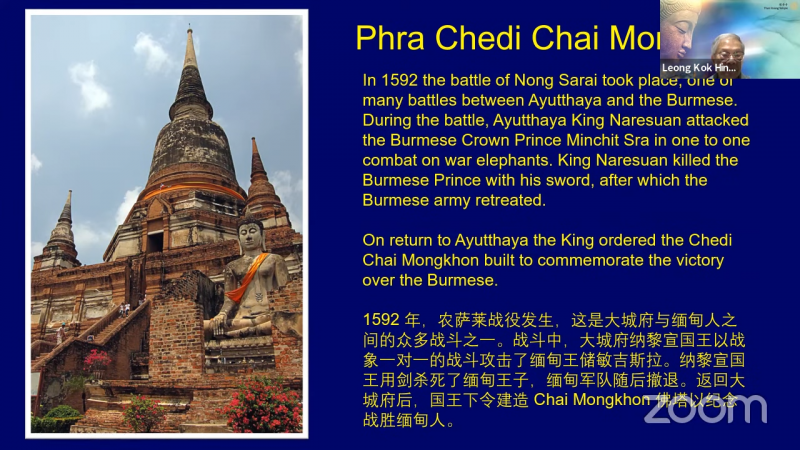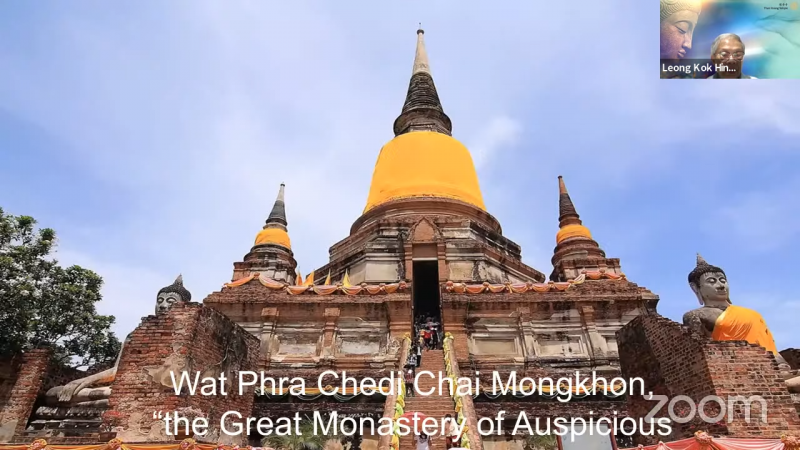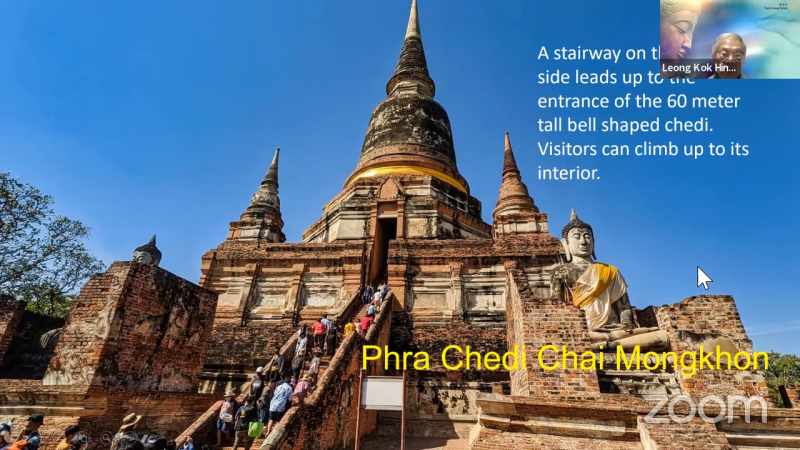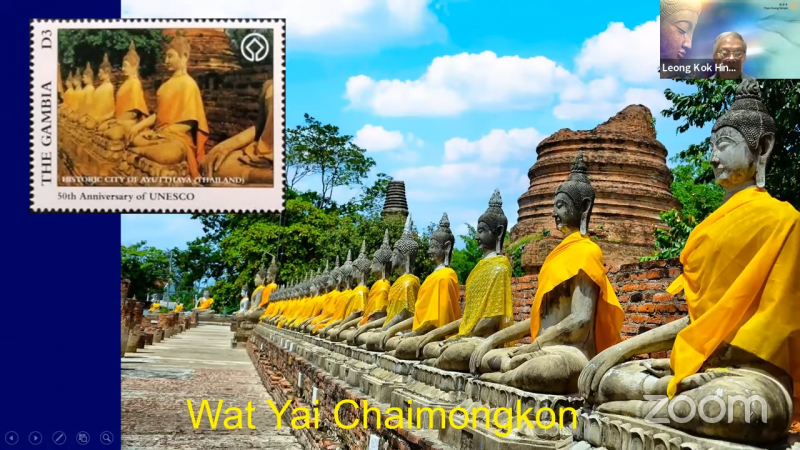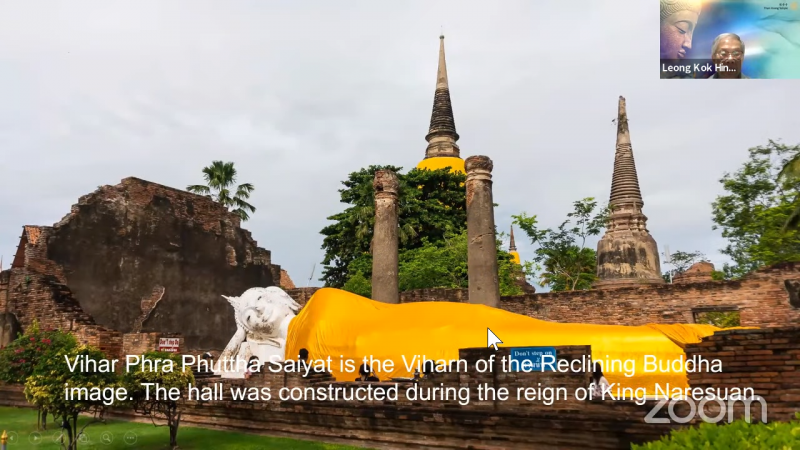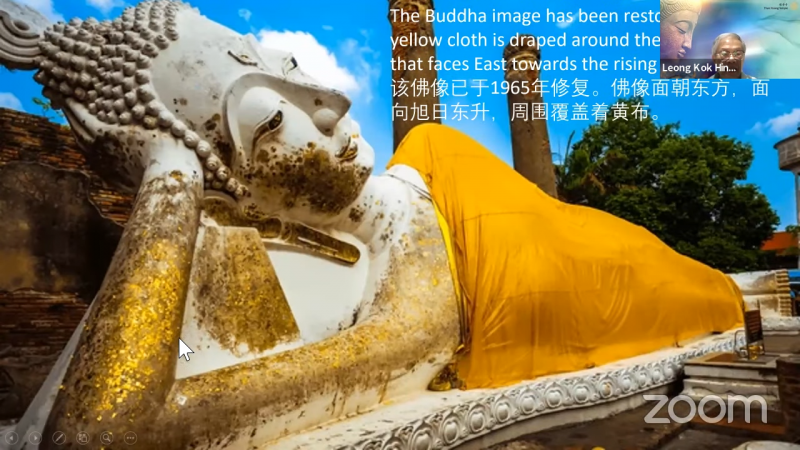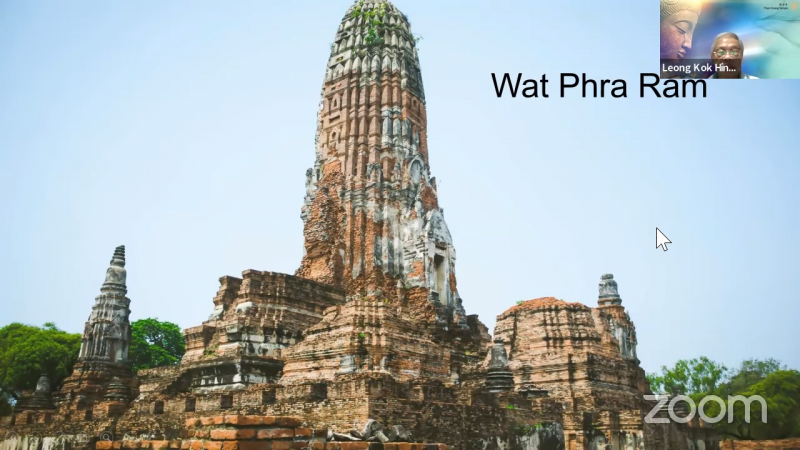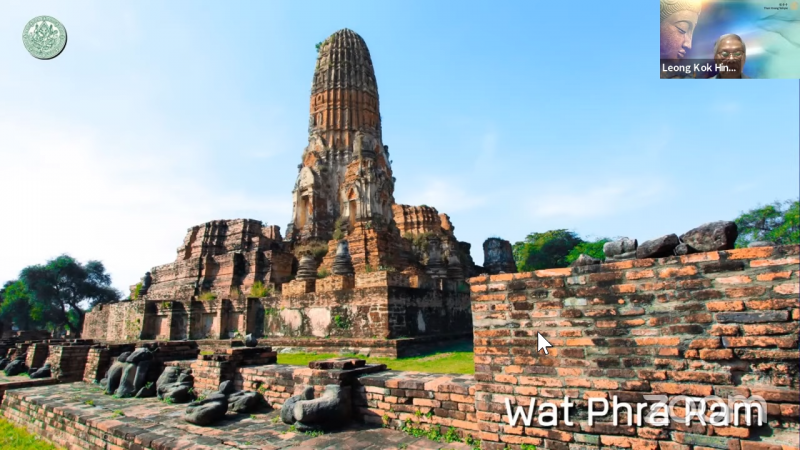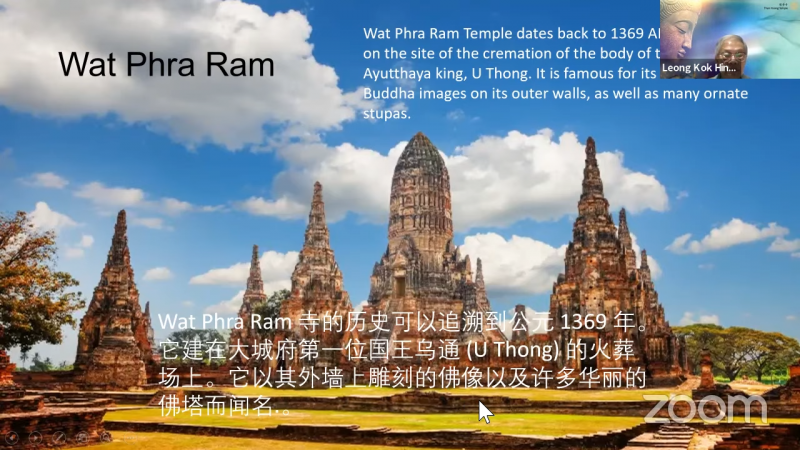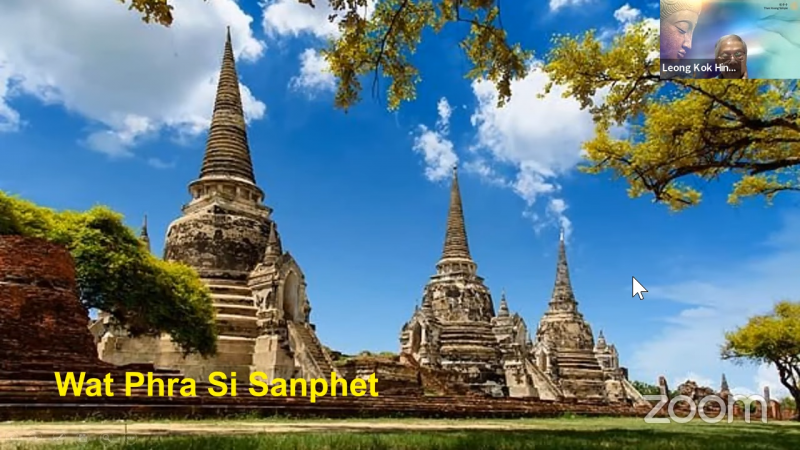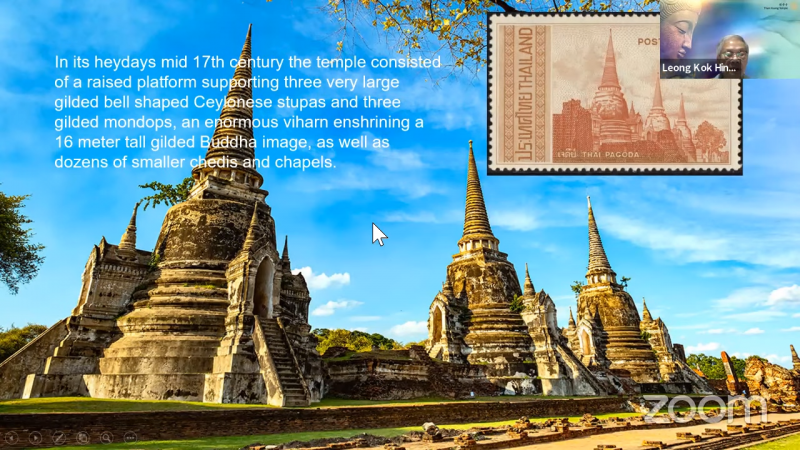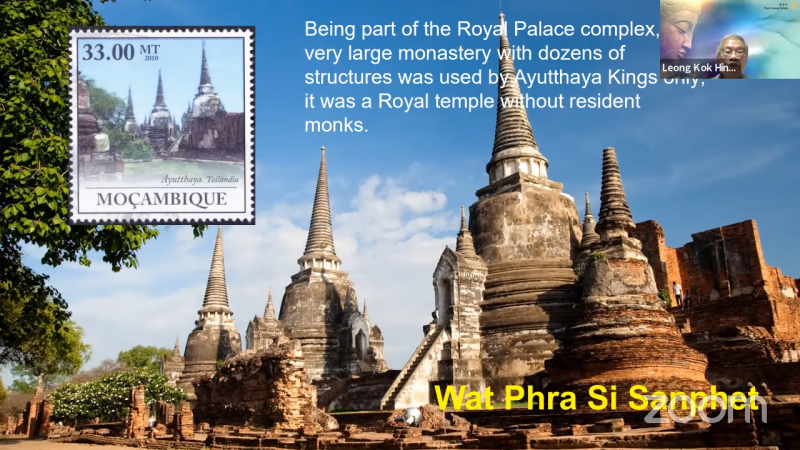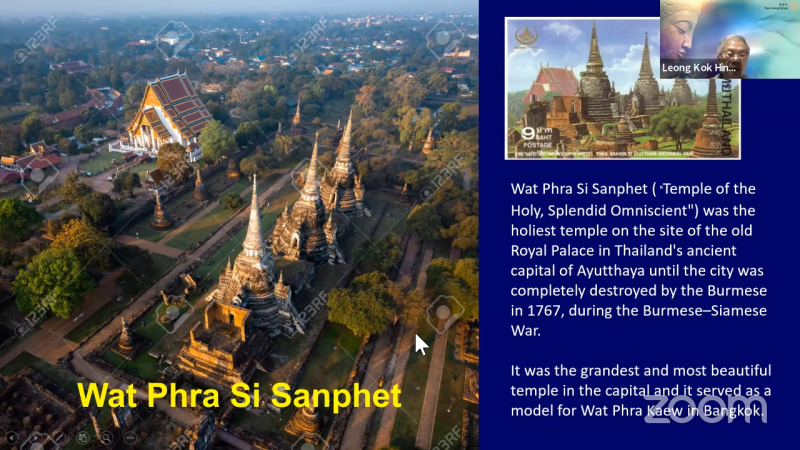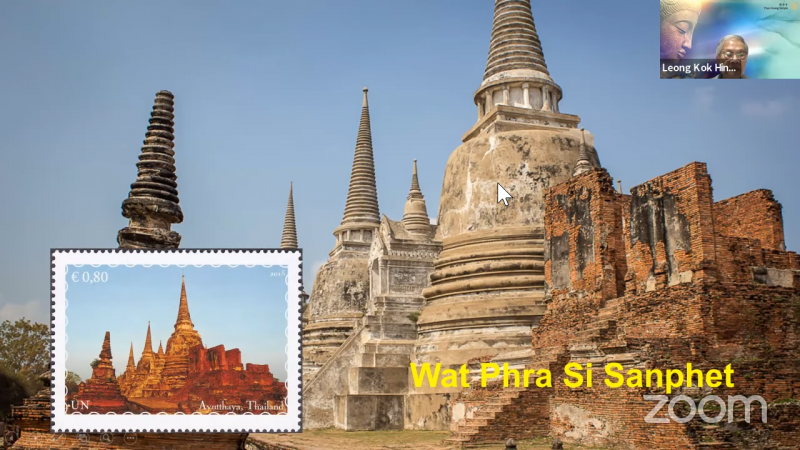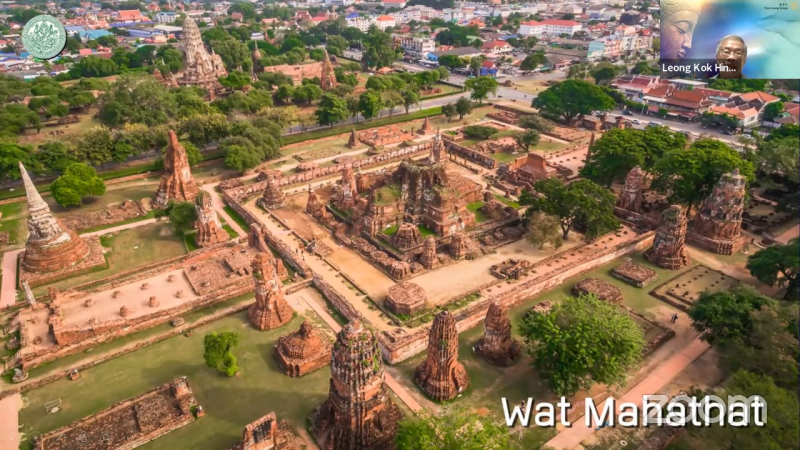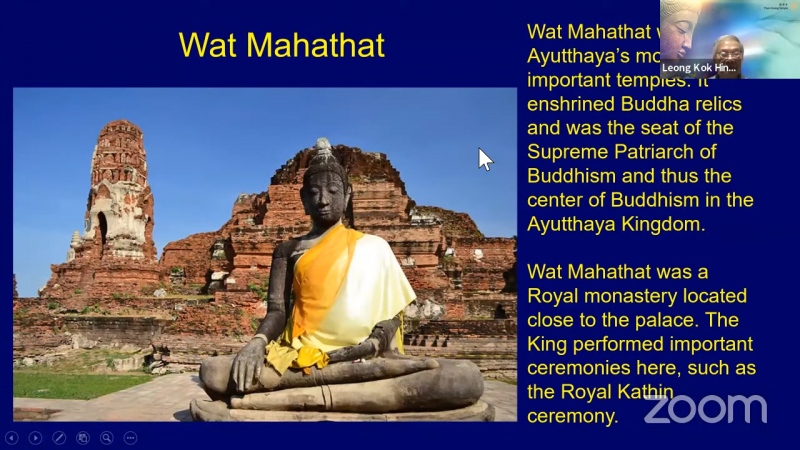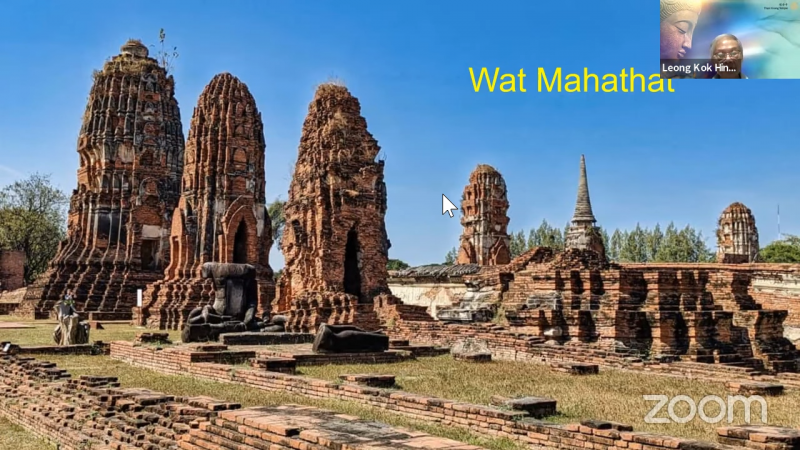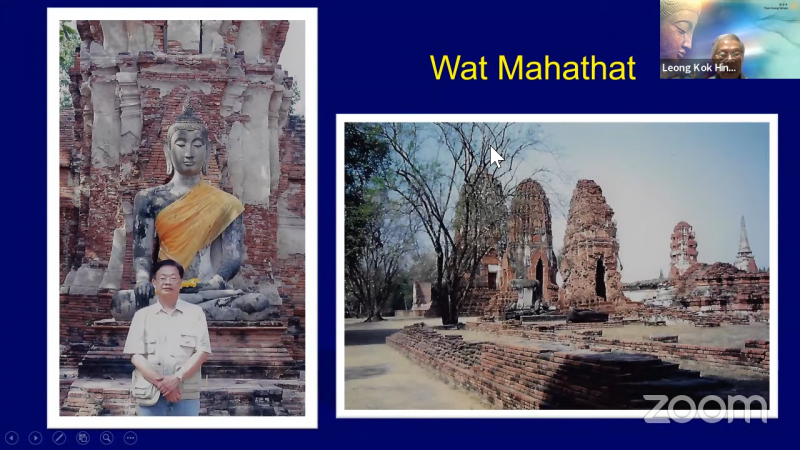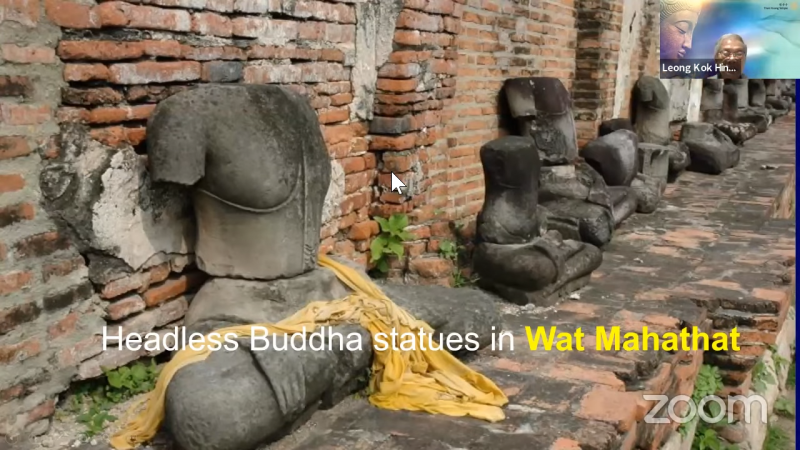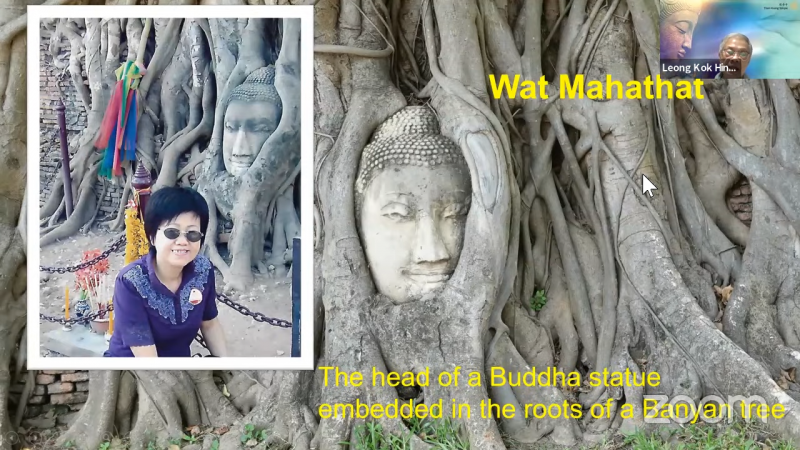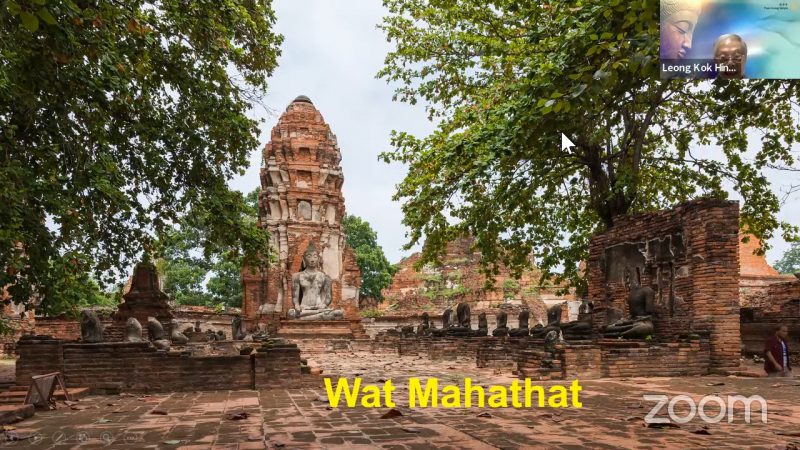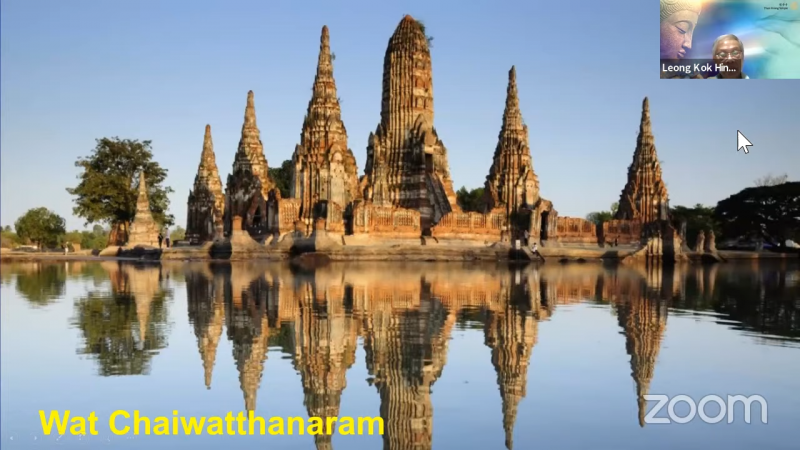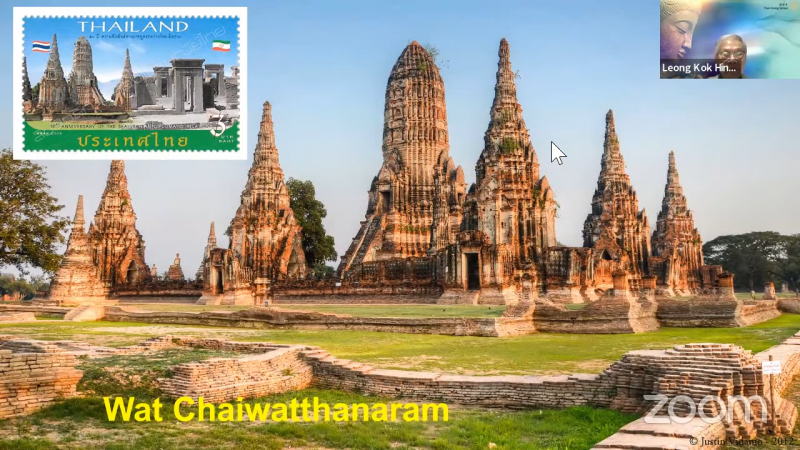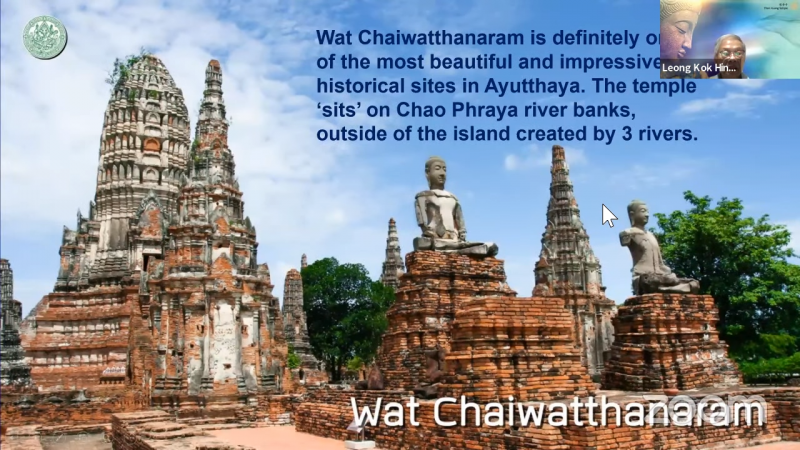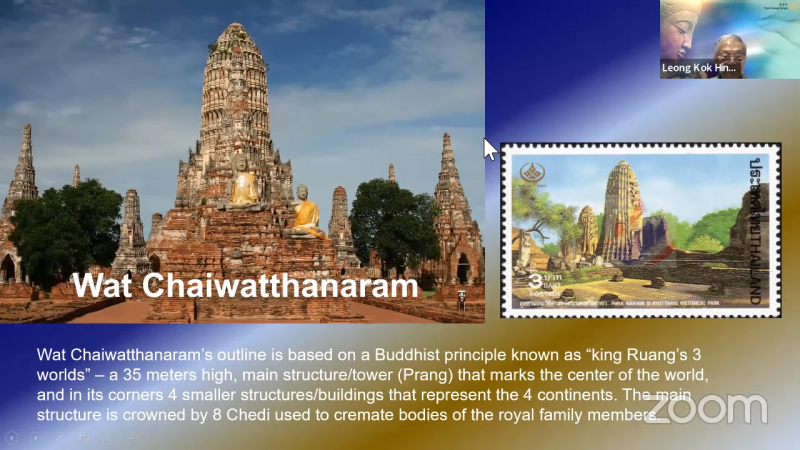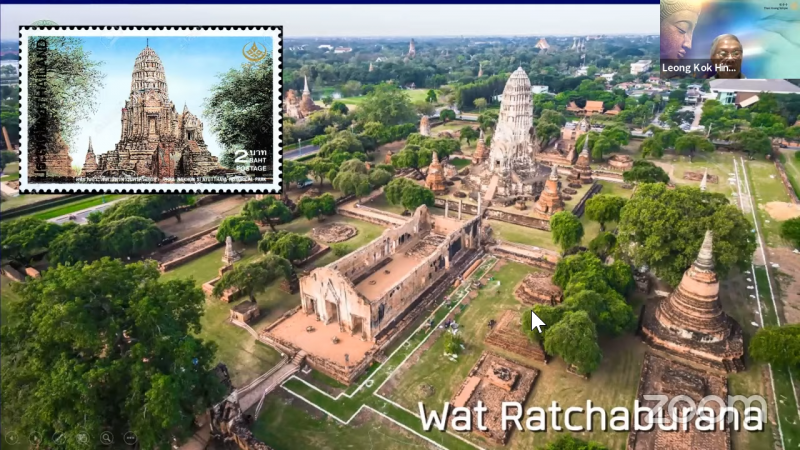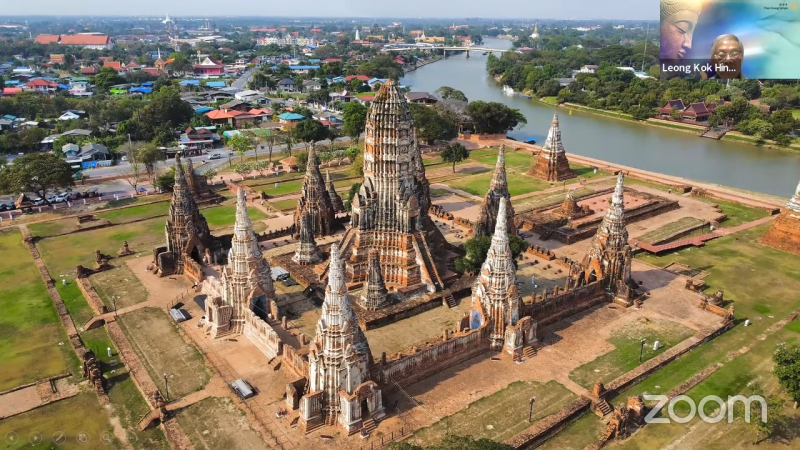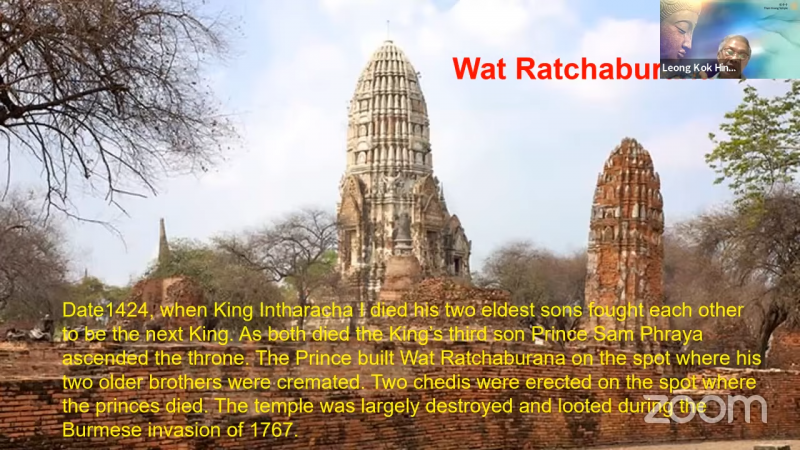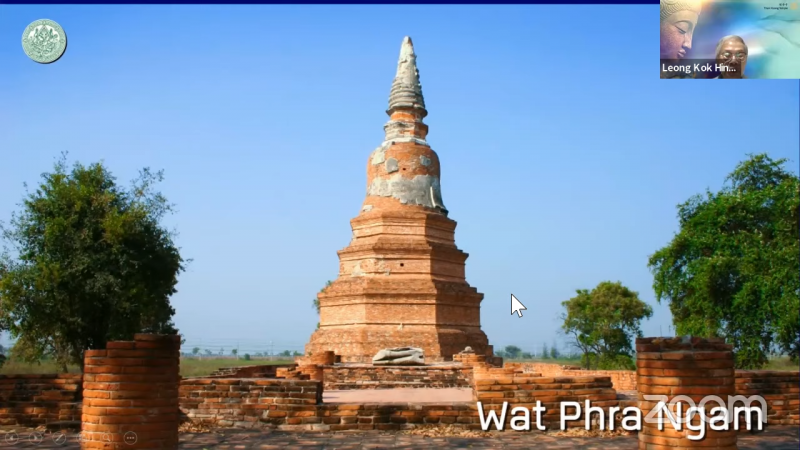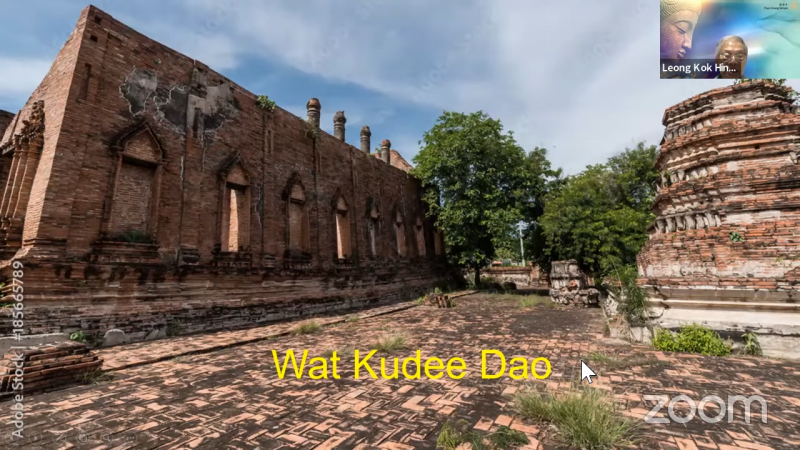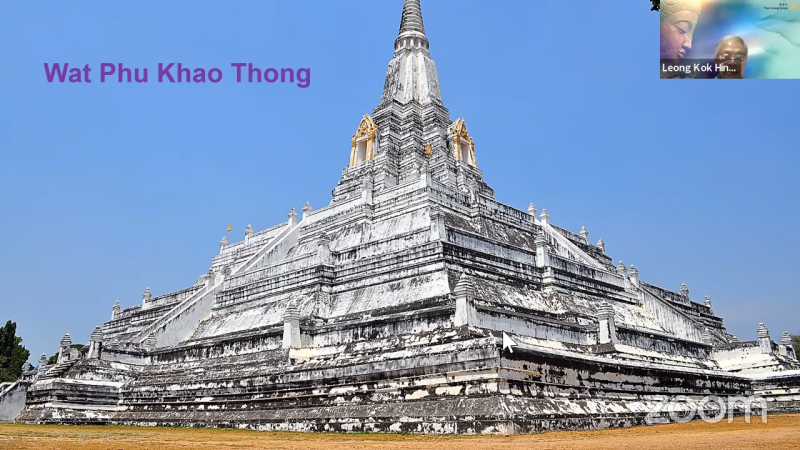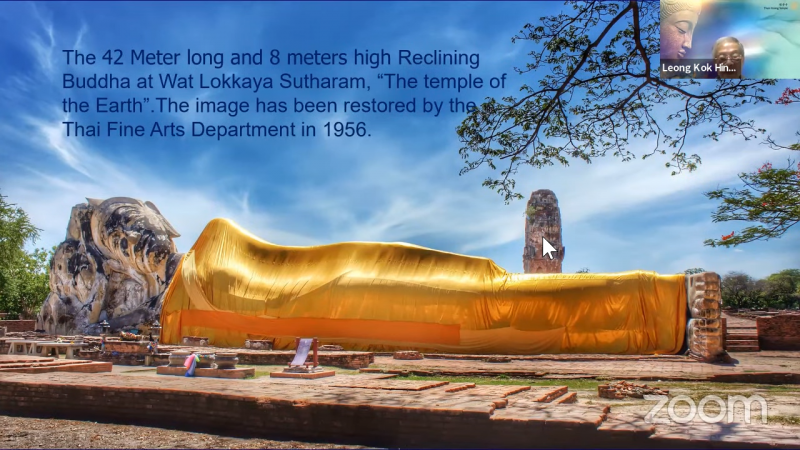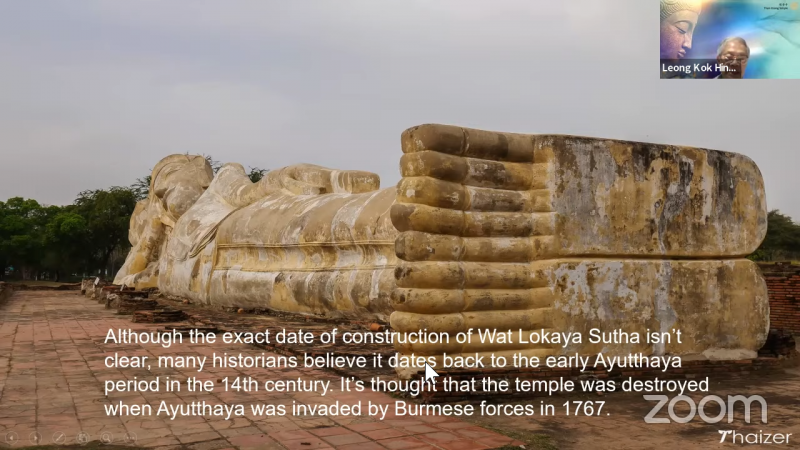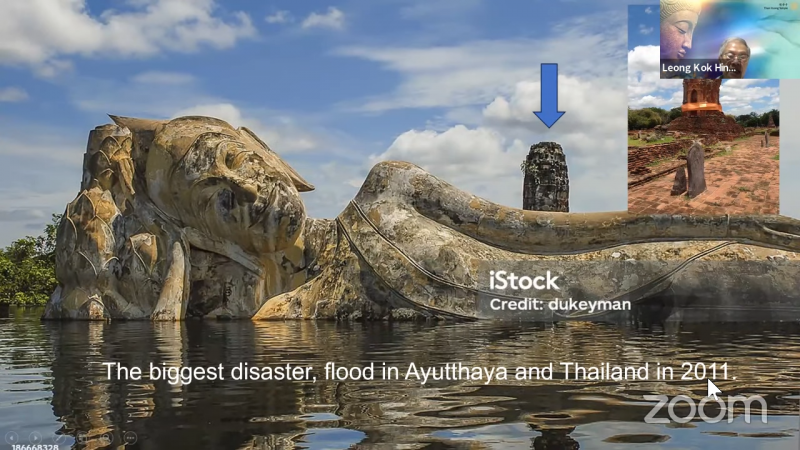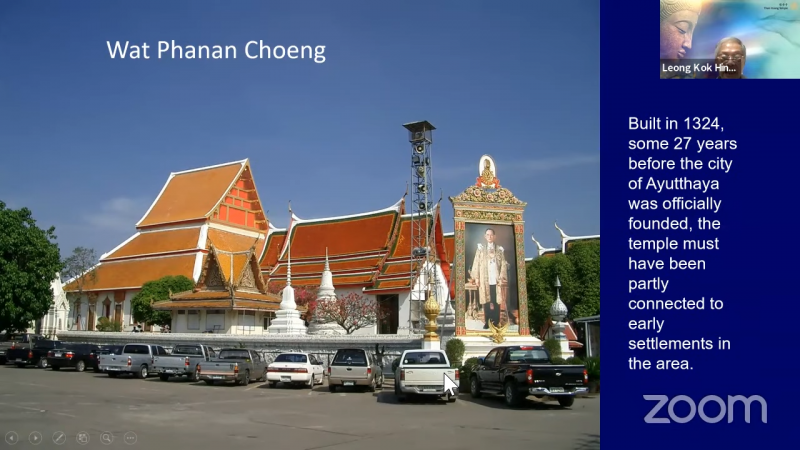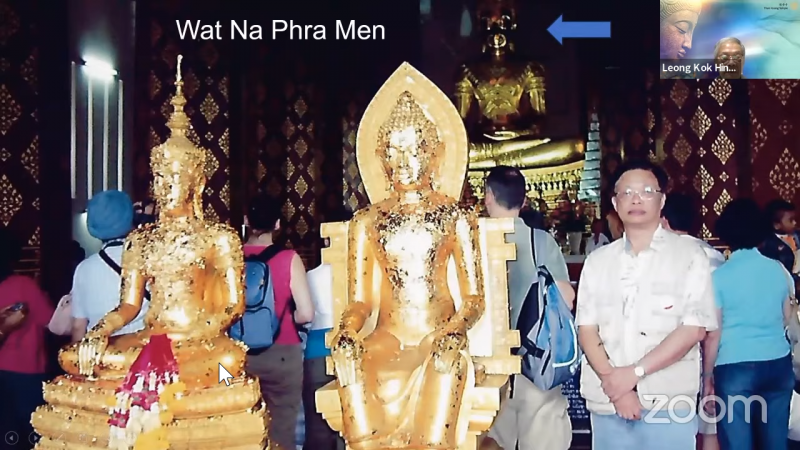Submitted by aier on

Than Hsiang's Pu Men Pin Online Gong Xiu Dharma Sharing (07/06/2024)
Former Principal of International Buddhist College, Brother Leong Kok Hing sharing " Ayutthaya "
The Historic City of Ayutthaya, founded in 1350, was the second capital of the Siamese Kingdom.
It flourished from the 14th to the 18th centuries, during which time it grew to be one of the world's largest and most cosmopolitan urban areas and a center of global diplomacy and commerce.
This site was chosen because it was located above the tidal bore of the Gulf of Siam as it existed at that time, thus preventing attack of the city by the sea-going warships of other nations. The location also helped to protect the city from seasonal flooding.
The Ayutthaya Kingdom arose from a confederation of three city-states on the Lower Chao Phraya basin (Ayutthaya- Suphanburi-Lopburi) on the western edge of the powerful Khmer empire.
Within less than a century, however, Thai kings succeeded in pushing back the Khmer, and in 1431 they sacked their great capital of Angkor.
In 1438 a greatly weakened Sukhothai was made a province of Ayutthaya.
Ayutthaya soldiers led by Th warlord Naresuan invaded.
The capital, Longvek, was captured in 1594 which marked the beginning of the establishment of Siamese military in the kingdom.
Cambodian royals were taken hostage and relocated at the court of Ayutthaya.
They brought many Khmer captives back to Ayutthaya with them, some of whom had been officials or craftsmen at the Khmer royal court. From them Ayutthaya's rulers adopted many of the Hindu ideas and practices that had been followed by the Khmer, including the concept of the ruler as god-king (devaraja).
The Portuguese were the first Europeans to make contact with Siam. They arrived in Ayutthaya in 1511 CE after capturing the port of Malacca (then known as Melaka) and sought a mutually beneficial relationship with the Thais.
News of the attack on Malacca and rumors about the strength of the Portuguese military power had reached King Ramathibodi II (r.1491-1529 CE), who may not have been entirely surprised to see a Chinese junk sail up the Chao Phraya River.
Aboard was a diplomatic mission sent from Malacca by the Portuguese admiral and military commander Afonso de Albuquerque (1453-1515 CE) to justify the capture of the trading port, which was a tributary state of Siam.
It was during this period that European traders and travelers started coming to Siam. The Portuguese reached Siam as early as 1511. They were followed in the 17th century by Dutch, English, Spanish, and French traders and missionaries.
Saint Joseph Church on southern facet of Ayutthaya was founded in 1662 by French missionaries. The church had been the residence of Apostolic vicars of Siam until its destruction at the Burmese hands in March 1767. It was rebuilt in 1831 and its modern Neo-Romanesque architecture was conceived in 1883.
Saint Joseph Church on southern facet of Ayutthaya was founded in 1662 by French missionaries. The church had been the residence of Apostolic vicars of Siam until its destruction at the Burmese hands in March 1767. It was rebuilt in 1831 and its modern Neo-Romanesque architecture was conceived in 1883.
Burmese Toungoo Kingdom Besieges Ayutthaya Conflict with the B
kingdom persisted, mid-18th century Burman armies captured Ayutthaya. The city was attacked and razed by the Burmese army in 1767 who burned the city to the ground and forced the inhabitants to abandon the city.
The king and members of the royal family, along with thousands of captives, were deported to the Burmese kingdom. All Ayutthayan records were burned and its works of art destroyed. The city was never rebuilt in the same location and remains known today as an extensive archaeological site.
The site was first used by the royal court a summer retreat in the 17th century. However, the Palace was destroyed with the fall of Kingdom of Ayutthaya and was restored by King Rama IV in the mid-19th century.
Wat Yai Chai Mongkhon or "The Monastery of Auspicious Victory", in the second half of the 14th century during the reign of King U Thong, first ruler of Ayutthaya. A chedi and viharn were built, the temple was named Wat Pa Kaeo. Wat Pa Kaeo became an important temple when it was made the seat of the Supreme Patriarch of the forest sect of Buddhism.
Phra Chedi Chai Mo
In 1592 the battle of Nong Sarai took place, one of many battles between Ayutthaya and the Burmese. During the battle, Ayutthaya King Naresuan attacked the Burmese Crown Prince Minchit Sra in one to one combat on war elephants. King Naresuan killed the Burmese Prince with his sword, after which the Burmese army retreated.
On return to Ayutthaya the King ordered the Chedi Chai Mongkhon built to commemorate the victory over the Burmese.
Ayutthaya Historical Park
Wat Phra Ram Temple dates back to 1369 AD on the site of the cremation of the body of the Ayutthaya king, U Thong. It is famous for its Buddha images on its outer walls, as well as many ornate stupas.
For more information, please browse https://www.youtube.com/live/SveIbyqPJXs
Spread the Buddha's teachings to guide more people to study Buddhism.
Continue diligently in the path studying the Buddha's teachings and listening to the Dharma.
Follow us on:
https://linktr.ee/thanhsiang






